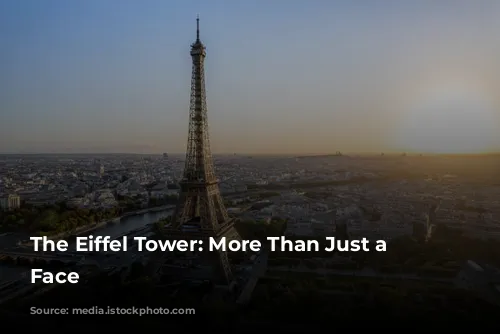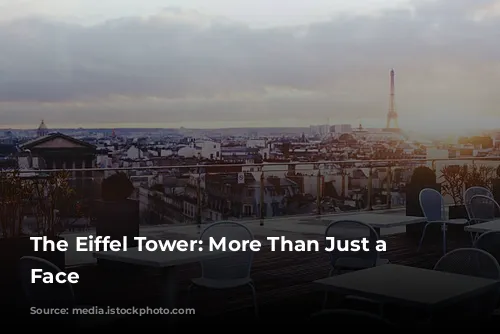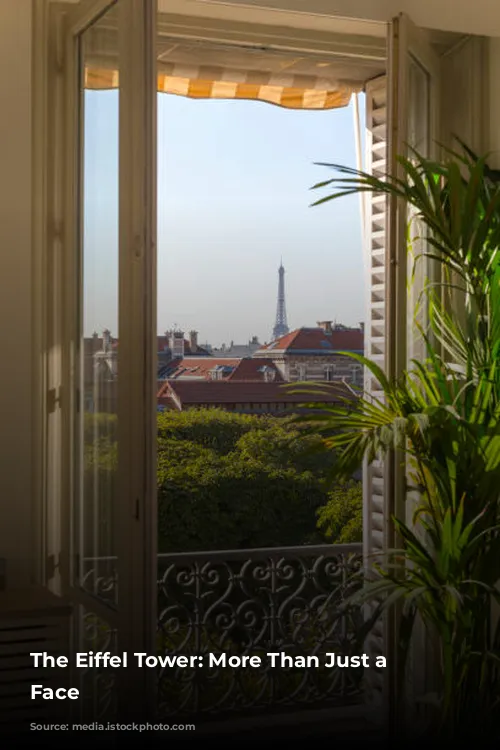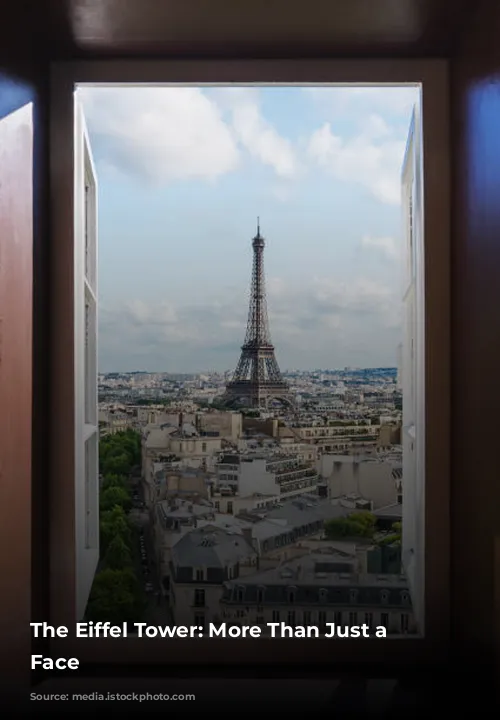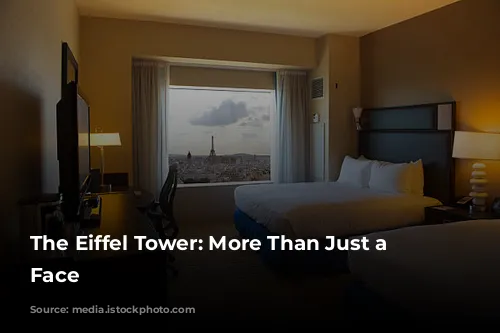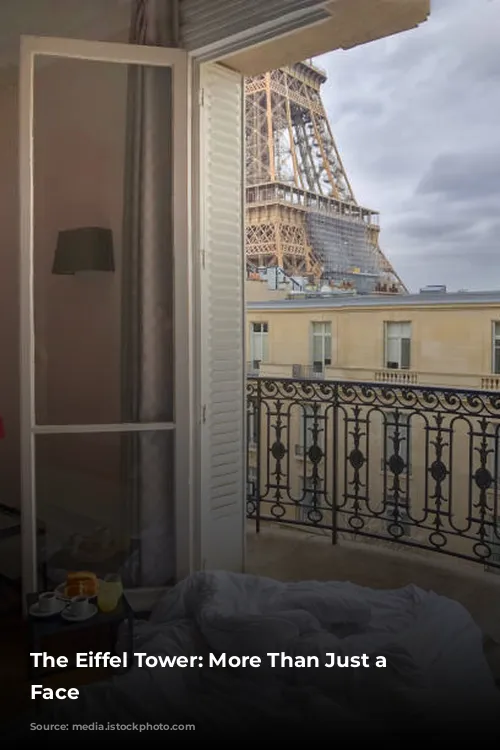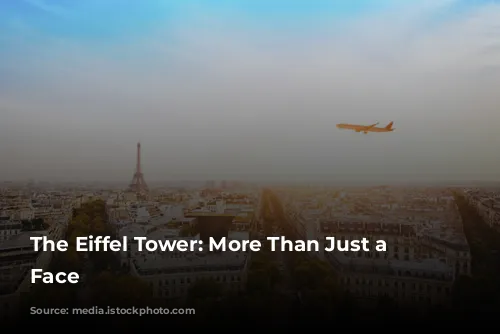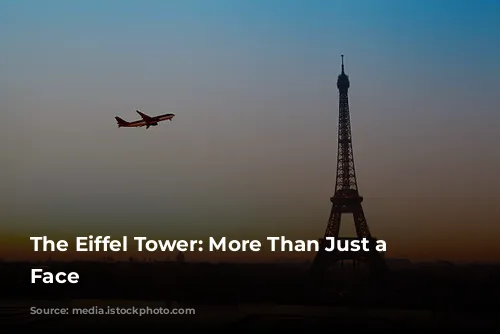The Eiffel Tower, also known as “la Tour Eiffel,” has long been an international symbol of Paris and its enchanting spirit. Built in 1889 as the centerpiece of the World’s Fair, the tower was meant to commemorate the centennial of the French Revolution and showcase France’s industrial might to the world.
This wasn’t just a whimsical idea. Its construction was a testament to engineering prowess, completed in an astonishing two years, two months, and five days. This feat was achieved using a staggering 7,300 tons of iron and 2.5 million rivets, resulting in a structure that dominated the Champ de Mars and attracted over two million visitors during the fair.
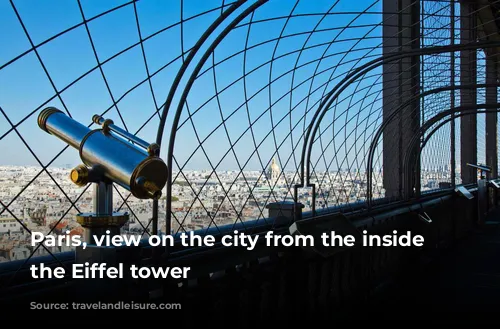
Beyond the Obvious: Unveiling the Eiffel Tower’s Hidden Gems
While millions flock to admire the Eiffel Tower’s iconic silhouette, many are unaware of the fascinating stories and secrets it holds.
A Controversial Conception
Though now universally recognized as a masterpiece, the Eiffel Tower faced initial resistance. A group of prominent artists, including Guy de Maupassant and Alexandre Dumas, penned a letter condemning the tower as a “gigantic black factory chimney” that would “humiliate” Paris’s architectural heritage. Despite the protests, the tower’s construction continued, defying the critics and ultimately becoming one of the most visited monuments in the world.
A Private Abode in the Sky
Gustave Eiffel, the tower’s namesake, reserved the topmost level for himself. Here, he hosted renowned guests, including Thomas Edison, in a private apartment designed by his own hand. Today, this space has been transformed into a recreation of Eiffel’s office, featuring wax figures of himself, his daughter, and Edison, and is open to the public.
Beyond Eiffel’s Vision
While the Eiffel Tower bears his name, its design was actually conceived by Maurice Koechlin and Emile Nouguier, two engineers working for his company. They sought the artistic expertise of French architect Stephen Sauvestre to soften the initial industrial aesthetic and appease public concerns. Their collaborative design triumphed over 100 other entries in a competition to choose the centerpiece of the 1889 World’s Fair.
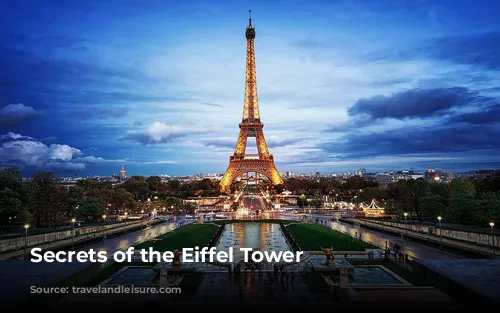
A Tower of Unexpected Turns
The Eiffel Tower’s history is filled with unexpected twists and turns.
A Fateful Demolition?
Originally intended to be dismantled after 20 years, the tower’s fate was changed by Eiffel’s strategic foresight. He incorporated a radio antenna and wireless telegraph transmitter into its design. Demonstrating the technology’s potential to the government in 1910, he secured a 70-year extension. By 1980, the Eiffel Tower had become synonymous with Paris and France, solidifying its position as a permanent landmark.
Surviving the Inferno
During World War II, the Eiffel Tower narrowly escaped destruction. As the Nazis lost control of Paris in 1944, Adolf Hitler ordered his generals to level the city, including plans to demolish the tower. Thankfully, Allied troops intervened before the order could be executed. While subsequent air raids damaged parts of the city, the Eiffel Tower emerged intact.
A Legacy of Iron
The Eiffel Tower’s tale intertwines with that of the Statue of Liberty. While designing the Statue of Liberty, sculptor Frédéric-Auguste Bartholdi sought the guidance of his mentor, Eugène Viollet-le-Duc, to design the statue’s internal framework. After Viollet-le-Duc’s passing, Bartholdi turned to Eiffel and Koechlin, who had already proven their iron expertise with Lady Liberty.

A Tower of Many Hats
The Eiffel Tower’s history reveals a versatility that transcends its iconic status.
A Hub of Activity
Throughout its existence, the Eiffel Tower has housed various businesses. These included Le Figaro, a French newspaper, which occupied office space on the second floor during the 1889 World’s Fair. The first floor also hosted a post office, a radio station, and a wooden theater designed by Sauvestre.
A Scientific Sanctuary
Eiffel, a passionate scientist, established a meteorology lab on the tower’s third floor. He conducted experiments in physics and aerodynamics, even constructing a wind tunnel at the tower’s base. He also generously shared his lab with other scientists for their research endeavors.
A Dynamic Structure
The Eiffel Tower’s massive iron frame is designed to withstand strong winds, resulting in a slight sway during storms. However, the tower’s movement isn’t limited to wind alone. The sun’s heat causes the iron to expand, making the tower grow a few centimeters in the summer. It also leans slightly towards the sun, as the side facing direct sunlight heats up faster than the others.
A Tribute to Scientific Minds
The Eiffel Tower pays homage to France’s scientific legacy. 72 names of prominent 19th-century French scientists and engineers are engraved on the tower. These tributes were painted over in the early 20th century but were restored in the late 1980s, making them visible once again. Visitors with keen eyes can spot names like Foucault, Dumas, and Perrier etched into the iron surrounding the first floor.

A Timeless Icon: The Eiffel Tower Today
The Eiffel Tower is more than just a striking architectural marvel. Its preservation requires meticulous care.
A Constant Effort to Maintain Beauty
To combat the effects of air pollution, bird droppings, and rust, a team of 50 specially trained painters diligently maintain the tower. They inspect the structure for corrosion, strip worn areas, apply anti-rust primer, and coat the metal with 60 tons of paint, all done by hand. This laborious process can take anywhere from 18 months to three years, depending on weather conditions.
A Symphony of Light
The Eiffel Tower’s first light show coincided with the 1925 International Exhibition of Modern Decorative and Industrial Arts. André Citröen, a car manufacturer, funded a spectacular 200,000-bulb display featuring stars, Zodiac symbols, comets, and, naturally, his car brand’s name.
Sixty years later, another show illuminated the tower with 336 yellow-orange spotlights. The now-famous sparkling light show, consisting of 20,000 bulbs, debuted on New Year’s Eve 1999 to usher in the new millennium. Today, this dazzling display can be enjoyed every night for five minutes every hour, starting at 8 pm, with a 10-minute finale at 1 am.
A Protected Light
While the Eiffel Tower itself is in the public domain, its illumination is protected by copyright. This stipulation only applies to professional photography. Snapping photos of the Eiffel Tower and its nighttime display for personal use remains legal.
A Reward for the Adventurous
For those daring enough to climb the tower’s stairs to the top, a glass of bubbly from the Champagne Bar awaits. There’s no better accompaniment to the breathtaking views than a celebratory sparkle.
A Legacy of Innovation
Eiffel’s contributions extend far beyond the Eiffel Tower. He was involved in the design of several bridges, railways, and viaducts across Europe. His notable achievements include the Maria Pia bridge in Porto, Portugal; Nyugati (Western) Railway Station in Budapest, Hungary; Pont de les Piexateries Velles in Girona, Spain; and the Côte d’Azur Observatory’s dome in Nice, France.
A Symbol of Height
At its opening in 1889, the Eiffel Tower claimed the title of the world’s tallest building, standing proudly at 312 meters (1,024 feet). It held this record for 40 years, until New York City’s Chrysler Building took the crown in 1930.
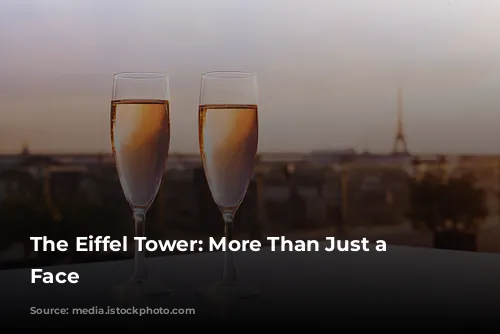
A Lasting Legacy
The Eiffel Tower is more than just a beautiful monument. It’s a testament to France’s innovative spirit, a symbol of its architectural and engineering prowess, and a reminder of its enduring legacy. From its controversial beginnings to its place as an international icon, the Eiffel Tower has continued to capture imaginations and inspire wonder for over a century.
